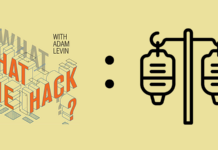

It is virtually impossible to see the devastation after Typhoon Haiyan in the Philippines or last weekend’s tornadoes in the Midwest, and not feel a tug on your heartstrings. After all, so many people were left with so little, and it could take so little from you or me to help them get food and clean water, shelter and even clothing to begin to replace what was lost.
Charity scam artists use that near-universal empathy and desire to help others not just to separate you from your money, but to steal from survivors of these terrible events the help that they need. Empathy, it turns out, is far from a natural reaction for some people.
So what do you do if you want to help? First off, don’t let the worst of humanity stop you from showing what the best of us can do to help others. But instead of clicking that email link or giving your credit card number over the phone to someone you don’t know who is soliciting your help, spend just a few minutes making sure that your money is really going to help those in need (rather than those in need of some time in front of a judge).
1. Do your homework
I know, I know — you hated hearing that when you were a kid, but it’s even more important today. Sites like Charity Watch and Charity Navigator (both recommended by the Federal Trade Commission) have done much of the legwork for you and can provide everything from lists of charities working on behalf of victims of specific disasters to breakdowns of how your donations get spent (like on salaries of executives rather than assistance to victims). Take the time to understand how and on whom your donations might be spent, what kind of work the charities provide and what you want to have happen with your money.
2. Take the long way there
It’s so easy to click on a link in your email, break out your wallet for a sympathetic caller or open a site from Facebook — but resist the impulse. When you decide to donate, go directly to the website of the organization to whom you want to give your money, rather than taking a shortcut. Not only could your dollars never reach their destination, you could end up downloading malware or leaving yourself open to identity theft.
3. Request information from them, not the other way around
Charities don’t need your Social Security number or bank account routing information to accept a tax-deductible donation — but scam artists will often make it seem like they do. A reputable charity will be able to tell you on what they will spend your money, whether your gift is tax-deductible (it should always be) and if there are any exceptions to the kinds of people who can take receipt of your generosity (in some cases, religious charities may not serve openly gay or transgender people, for instance). It’s your money, so make sure it will be spent as you would like.
4. Keep records
You are about as likely to keep a record of the pennies you drop in the Christmastime Salvation Army kettles as any other cash donation — which is to say, you’re not very likely to remember come tax season, or if you do happen to get scammed. Instead of paying by cash or wire transfer, pay with a check or — even better — a credit card, which can allow you to track purchases and which often has theft protection as part of your agreement. And make sure that, if your contribution exceeds $250, you receive a letter from them confirming their charitable status as well as the amount of your donation.
Since the beginning of time, there have been people who have been willing and eager to take advantage of one’s good nature during another’s time of need. With that in mind, take the time you need (or, as we say in New Jersey, “Do what you gotta to do”) in order to assure yourself that the right people are receiving what you are giving.
Originally posted in the Huffington Post.









